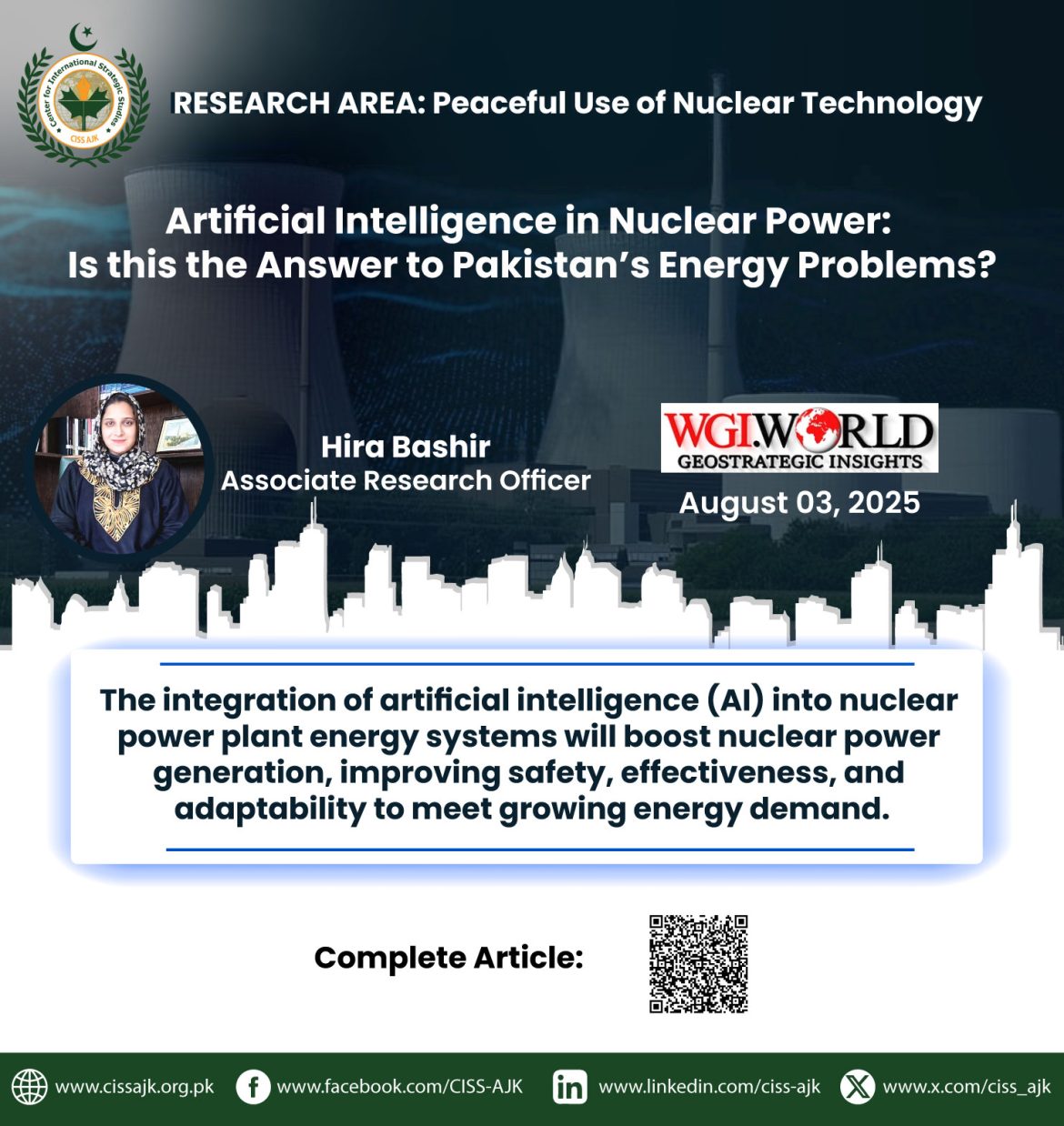As global energy demand rises, so does concern about ensuring a cleaner and more-sustainable electricity supply. How can countries meet this growing demand for reliable energy while keeping carbon emissions low?
Nuclear energy is emerging as one of the most suitable options for this purpose and promises to provide reliable, low-carbon electricity. According to current trends, the integration of artificial intelligence (AI) into nuclear power plant energy systems will boost nuclear power generation, improving safety, effectiveness, and adaptability to meet growing energy demand.
This article explains how, by integrating AI into nuclear energy systems, countries such as Pakistan can ensure a safer, more efficient, and sustainable energy future in three ways that precisely meet the needs of their growing economies.
Firstly, the true value of AI comes from its ability to monitor complex systems by analyzing data collected from sensors in real time and predicting problems before they occur. This capability could support Pakistan’s fragile power grid, which has to contend with frequent power outages. This is important because during summer peaks, energy demand now exceeds 30,000 MW, while blackouts remain frequent. Globally, tech giants such as Microsoft are already using AI to speed up nuclear licensing by reducing bureaucracy. In the US, Microsoft and the Idaho National Laboratory are transforming licensing processes that once took up to a decade into just 18 months, demonstrating how digital tools can help make clean energy available more quickly.
Second, AI can make nuclear production more flexible and important for countries with fluctuating energy needs such as Pakistan, where energy demand can vary greatly from day to day and season to season. Traditionally, reactors operate at constant power regardless of the time of day. But with AI, production can be adjusted in real time based on demand spikes, weather conditions, or emergencies. This helps prevent sudden blackouts that cause disruption to households and industry. Similarly, large global data centers, such as Microsoft’s $3.3 billion Stargate project in Wisconsin, consume as much electricity as several nuclear power plants. By 2030, data centers alone could consume 8% of all electricity in the United States, up from 3% today—a clear sign that growing digital demand requires smarter, more responsive energy solutions.
Thirdly, the role of AI in predictive maintenance. Small faults in nuclear power plants, if overlooked, can lead to costly repairs or unexpected shutdowns. AI can detect when critical parts such as cooling systems or reactor components need maintenance. Early diagnosis prevents serious failures, reduces downtime, and extends the life of expensive infrastructure. As a result, efficiency increases while long-term maintenance costs decrease. Tools such as digital twins, virtual copies of reactors, allow engineers to test updates and fix defects without interrupting real operations. Globally, the UN and the International Atomic Energy Agency (IAEA) are promoting these tools to help countries operate plants more safely and cost-effectively.
AI is proving to be a key tool for achieving safer, more efficient, and more flexible nuclear energy. By using AI in energy systems, countries such as Pakistan can better meet growing energy needs, reduce carbon emissions, and move toward a sustainable future. However, introducing AI into nuclear plants comes with some challenges. The push from big tech companies shows both sides of the coin: companies such as Microsoft, Google, and Amazon see nuclear power as a way to power huge data centers, but critics warn that it remains expensive, suffers from long delays, and carries risks such as waste storage and accidents, as disasters such as Three Mile Island remind us.
Developing such advanced systems is complex, and rigorous risk controls are essential in high-risk environments. The International Atomic Energy Agency (IAEA) is addressing these challenges, and the use of AI must be guided by robust global protocols to ensure safety and reliability.
When AI is integrated into existing nuclear power plants in Pakistan, the benefits multiply. AI systems can predict energy demand, optimize energy production, and prevent small problems from turning into unexpected shutdowns. This will help meet Pakistan’s energy needs more reliably and sustainably, but only if used cautiously and in conjunction with truly sustainable solutions. The choice is clear: if AI is so intelligent, it should help guide us toward a future that is not only powered, but also protected.
Author: Hira Bashir – Associate Research Officer at CISS AJK. She is also pursuing MPHIL in International Relations from Muslim Youth University, Islamabad. Her area of research is The Peaceful Use of Nuclear Technology.
(The views expressed in this article belong only to the author and do not necessarily reflect the views of World Geostrategic Insights).



